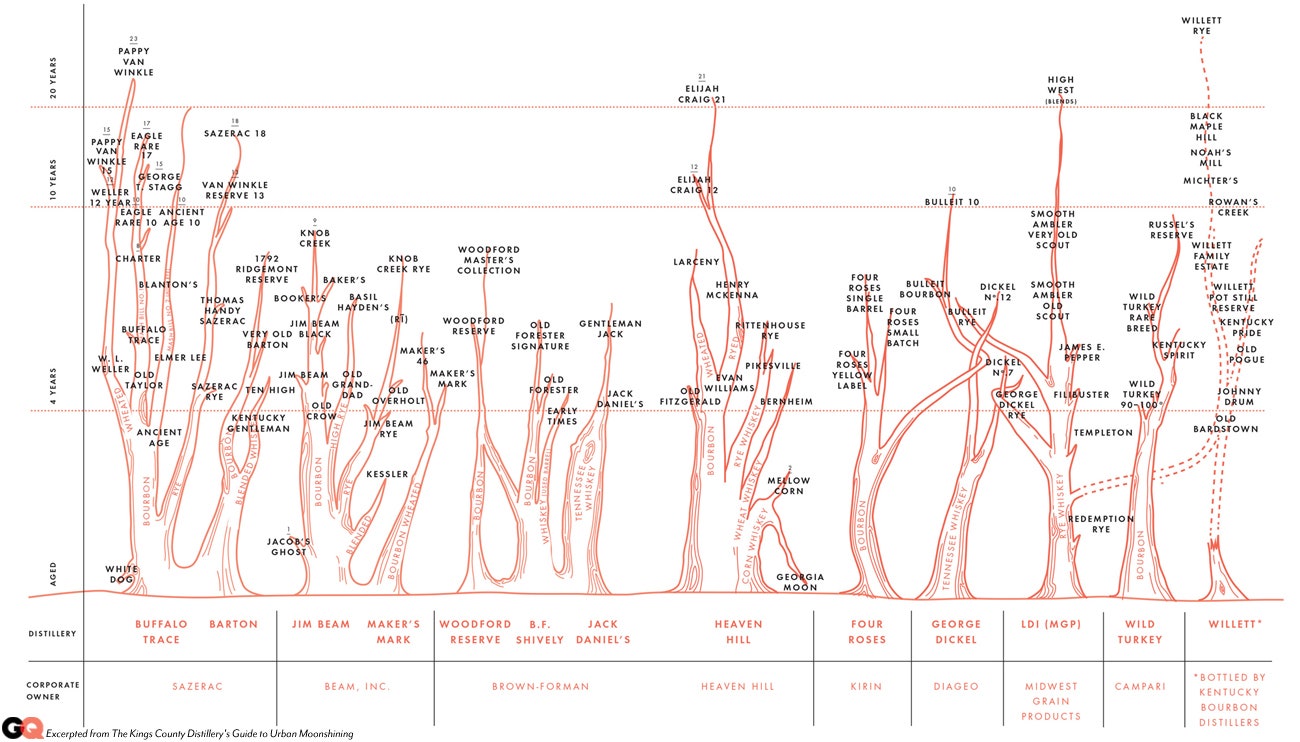When you look at the major players in the Bourbon world, it seems like most of the labels you see on the shelf are really controlled by a few major players.
Heaven Hill produces a large variety including Evan Williams, Elijah Craig, Henry MeCkenna, Heaven Hill, Fighting **** and about 12 others. Most of those seem to all be produced in their Bardstown KY facility.
Beam Suntory produces Jim Beam, Makers Mark, Old Grandad, Old Crow, Basil Haydens, Bookers and Knob Creek. A good handful of theirs are produced at the Clermont KY facility (Knob Creek, Jim Beam, Old Grandad).
My question for the bigger Bourbon aficionados, is what is the major differences between some of the labels produced out of the same facility? Do they all have slightly differing recipes? Age and blend others differently?
Just for comparison, a 750mL bottle of Elijah Craig 12 year is 31.49 on BevMo's website (24.99 for Club Bev, whatever that is). A 750mL of Evan Williams Black is $13.99 (11.99 for club bev). Now the EJ has the "12 year old" on its label. I know from some reading I've done that 12 year old does not necessarily mean that ALL of the whiskey in the bottle is that old. Some 12 year old is blended with newer stuff.
Now, I've never done a side by side either, so I couldn't tell you whether EJ deserves a markup over EW. Are we fooling ourselves with a lot of these labels though? Specifically for labels produced by the same parent company out of the same facility? Devi's advocate side - yes aging takes up space and a lot of time, so having some 12 year old blended in WILL drive up the price.
Chime in with your thoughts or insights!
Heaven Hill produces a large variety including Evan Williams, Elijah Craig, Henry MeCkenna, Heaven Hill, Fighting **** and about 12 others. Most of those seem to all be produced in their Bardstown KY facility.
Beam Suntory produces Jim Beam, Makers Mark, Old Grandad, Old Crow, Basil Haydens, Bookers and Knob Creek. A good handful of theirs are produced at the Clermont KY facility (Knob Creek, Jim Beam, Old Grandad).
My question for the bigger Bourbon aficionados, is what is the major differences between some of the labels produced out of the same facility? Do they all have slightly differing recipes? Age and blend others differently?
Just for comparison, a 750mL bottle of Elijah Craig 12 year is 31.49 on BevMo's website (24.99 for Club Bev, whatever that is). A 750mL of Evan Williams Black is $13.99 (11.99 for club bev). Now the EJ has the "12 year old" on its label. I know from some reading I've done that 12 year old does not necessarily mean that ALL of the whiskey in the bottle is that old. Some 12 year old is blended with newer stuff.
Now, I've never done a side by side either, so I couldn't tell you whether EJ deserves a markup over EW. Are we fooling ourselves with a lot of these labels though? Specifically for labels produced by the same parent company out of the same facility? Devi's advocate side - yes aging takes up space and a lot of time, so having some 12 year old blended in WILL drive up the price.
Chime in with your thoughts or insights!



